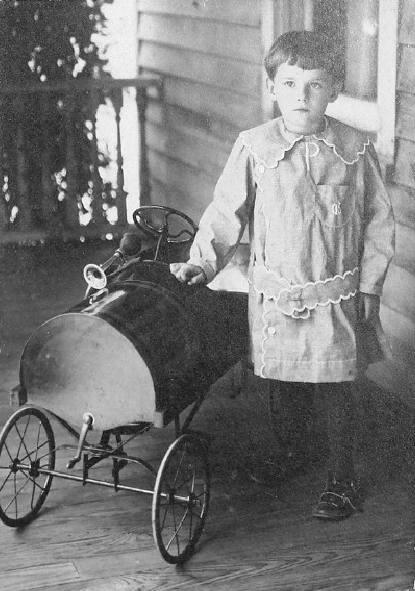Social Class Component
Here there was a social class component, worn by middle-class boys much more than working-class boys. The photogaphic record can be misleading. Middle-class families were much more likely to have cameras and take pictures around the home.
Plain Garments
Play tunics would normally be simpler with out the fancy frills of dressy tunics and in sturdy easy to launder fabrics. This is interesting because until the appearance of tunic suits we do not really see play suits.
Some tunic suits were obviousdly made for dreessy occassions. Others could be worn for dressy or play occassions. In the early-20th century when these garments were popular, launfry was still a major concern for maithers. After World War I we begin to nsee setergents and kaundry machines having a major imlpact on yhj lives of the hime maker.
Material
Some tunic suits were quite inexpensive and made in basic materials. Children clothes were fairly standard and mothers used old clothes as play clothes for children. More expensive tunics might be done in linnen. WEinter tunics were less common, but were done in wool.
Pinafores
Girls would wear pinafores to protect their clothes. This was for the most oart not the case for boys. The tinic was an inexpensivde play garment that could be easily washed makingg the pinafore unecessary. And we begin to see fewer girls with pinafores as well.
Generally studio poertraits show how the children would be dressed for dressy studio occassions. After the turn-of-the-20th century we begin to see many outdoor family snapshots. Giving us views that were only rarely available in the 19th century. Some look rather dressy. The snapshot here is a good example (figure 1). Although here it looks to us that mothr has dressed up the boy for the photograph. Often the outfoot can be made to look dressy by working on the boy's hair and adding long stockings and dressy shoes. In this case long stockingd and sandals is a bit of an odd cvomination. And motice how this ia a staged sanpshot with the boy done up a bit so the bniy can show off his fancy new peddal car. This is not a play situation, but is a casual scene at home. Other snapshots do show boys in actual play situations or on outings with parents in which the tunics are being worn as casual garments.
Seasonality
Most images we have found of boys wearing play tunics seem to be summer tunics. We are less sure what younger children wore for play during cold weather.
HBC

Navigate the Boys' Historical Clothing hair style pages:
[Return to the Main long hair page]
[Return to the Main curl hair page]
[Bangs]
[Ringlet curls]
[Hair bows]
[Caps]
[Collar bows]
Navigate the Boys' Historical Clothing Web Site:
[Return to the Main American tunic utility page]
[Return to the Main American tunic page]
[Introduction]
[Activities]
[Biographies]
[Chronology]
[Clothing styles]
[Countries]
[Topics]
[Bibliographies]
[Contributions]
[FAQs]
[Glossaries]
[Images]
[Links]
[Registration]
[Tools]
[Boys' Clothing Home]
Created: 4:25 AM 7/28/2008
Last edited: 4:39 PM 7/12/2021



